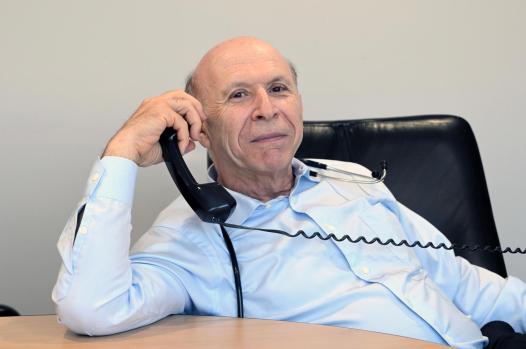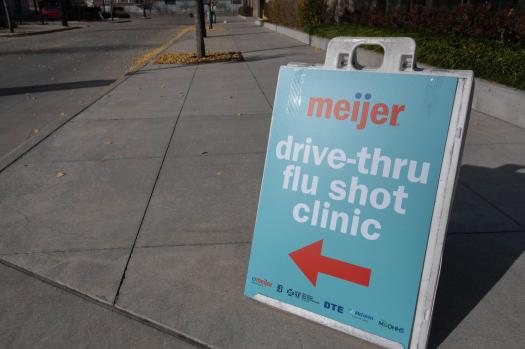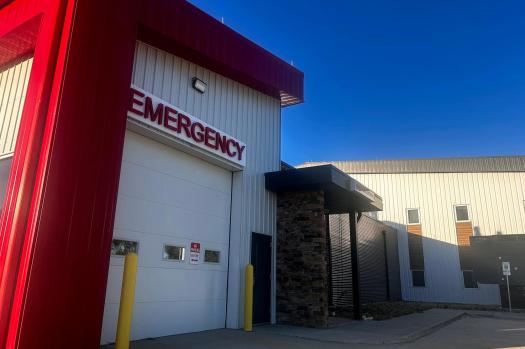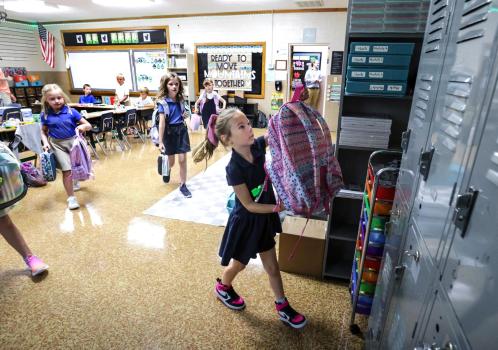Written by KFF Health News’ Christine Mai-Duc
Throughout the 1990s federal immigration sweeps, a sitting governor’s push to remove birthright citizenship, and the widely reported workplace crackdowns and family separation policies of President Donald Trump’s first term, Jacob Sweidan has seen his patients.
Related Articles
-
Considering a life change? Brace for higher ACA costs
-
Despite federal shift, state health officials encourage COVID vaccines for pregnant women
-
Breaking down why Medicare Part D premiums are likely to go up
-
Moving to a new home or school can stress kids out. How to make it more manageable
-
Federal investigators demanded details on transgender patients from at least 1 hospital
However, Sweidan said he has never witnessed a decline in patient visits like this in his 40 years as a physician in Southern California, who treats patients who cannot afford care, including many immigrant families.
They are frightened to visit the office. Sweidan, a neonatologist who operates five clinics in Orange and Los Angeles counties, said they are becoming more and more ill. And since they have no other option, they go to the emergency room when they are on the verge of passing out.
He has sent young children to the ER in the past two months because their parents were too scared to call his office until after they had a high fever for many days. He claimed that he treated a 14-year-old child in the emergency room who was in danger of going into a diabetic coma after running out of insulin and his parents were too scared to go get more.
After the COVID-19 outbreak, Sweidan had ceased providing telemedicine visits; however, as increased immigration enforcement pushes patients without legal status—including their children who are U.S. citizens—further into the shadows, he and other medical professionals have reinstated them.
After Trump reversed a Biden-era regulation that prohibited immigration officers from operating in sensitive locations like hospitals, schools, and places of worship, patients are becoming more and more afraid to get care. Clinics and health plans have adapted tried-and-true methods to treat patients who are afraid to leave their homes, taking a cue from COVID-19.
Clinic administrators and industry colleagues have told Sara Rosenbaum, professor emerita of health law and policy at George Washington University, that they have seen a significant decline in in-person visits by immigrant patients.
According to Rosenbaum, “I don’t think there is a community health center in the country that is not feeling this.”
Virtual visits have increased from approximately 8% of appointments to nearly 25% at St. John’s Community Health clinics in the Los Angeles area, which treat an estimated 30,000 patients without legal status each year, according to Jim Mangia, president and chief executive officer. Additionally, the charity is teaching stressed staff how to interpret a warrant and enrolling some patients in in-home health visits, a service supported by private donors.
According to Mangia, many are not picking up their medications. The doctor is not being seen by them.
According to Mangia, during a raid at MacArthur Park eight weeks ago, federal officials brandished a rifle at an employee and tried to enter a St. John’s mobile clinic in Downey to access patients. Two health center employees were accused by federal prosecutors for allegedly interfering with immigration officials’ attempts to make an arrest at an Ontario facility, while Immigration and Customs Enforcement contractors sat in a Southern California hospital waiting for a patient last month.
Because she is afraid of the outdoors, C.S., a Huntington Park immigrant without legal status, said she enrolled in St. John’s home visit services in July. The 71-year-old woman claimed to have missed blood testing and other lab tests this year. She begged to be identified only by her initials out of concern about deportation. She recently missed an appointment with a doctor for her arthritic hands because she was too scared to ride the bus. She suffers from leg pain from a car accident a few years ago, and she also has prediabetes.
Speaking through an interpreter, she explained her health concerns in Spanish, saying, “I feel so worried because if I don’t get the care I need, it can get much worse.” She was given a phone number by a clinic doctor in case she wanted to make an appointment over the phone.
When KFF Health News asked federal Department of Health and Human Services officials about the effects of the raids on patients, they did not reply.
The Trump administration shows no signs of changing its approach. Following a lawsuit filed by immigrant advocates accusing ICE of using unlawful techniques, federal officials have attempted to temporarily halt a judge’s decision that restricts how they conduct raids in Southern California. The restraining order remained in effect when the 9th U.S. Circuit Court of Appeals rejected the request on August 1.
After the county’s director of health services noticed a sharp rise in phone and video visits, supervisors in Los Angeles County instructed county agencies to investigate increasing virtual appointment alternatives in July. Meanwhile, legislation that would limit immigration officials’ access to locations including schools and medical institutions is being considered by California state lawmakers. In May, Democratic Governor Jared Polis of Colorado signed a similar bill into law.
As a last resort, immigrants and their families will probably turn to more expensive emergency department care. Additionally, according to Nicole Lamoureux, president of the National Association of Free & Charitable Clinics, recently implemented Medicaid cuts are anticipated to put additional strain on hospitals and emergency rooms.
The health care safety net will be under pressure from an increase in patient demand, according to Lamoureux, in addition to clinics attempting to reach those who are withdrawing from care before they develop more serious problems.
Nearly 90% of Venice Family Clinic’s patients are at or below the federal poverty line, according to CEO Mitesh Popat. Staff members call patients prior to appointments to inquire if they intend to visit in person and to offer telehealth as a backup alternative if they are anxious. Additionally, they offer quick telemedicine services as a backup and call if a patient does not show up five minutes into their appointment. Over the previous month, telehealth visits to the clinic have increased by about 5%, according to Popat.
In January, Clinica de Salud del Valle de Salinas started using Spanish radio advertisements to advertise telehealth services in the Salinas Valley, a region where a significant number of Spanish-speaking farmworkers reside. At community meetings and health fairs, the clinics also provided training on Zoom and other digital platforms.
According to Chief Executive Officer Michael Hunn, CalOptima Health, the largest Medi-Cal benefits administrator in the region and the provider of coverage for almost one in three Orange County residents, sent over a quarter of a million text messages to patients in July urging them to use telehealth instead of skipping care. Additionally, the insurer has created a webpage with resources for patients who want to get care over the phone or have their medications delivered to their homes.
There is a pandemic of fear among the Latino community. According to Seciah Aquino, executive director of the Latino Coalition for a Healthy California, an advocacy group that supports health access for immigrants and Latinos, they are quarantining in the same manner that we all had to during the COVID-19 outbreak.
According to Isabel Becerra, CEO of the Coalition of Orange County Community Health Centers, whose members reported a 40% rise in telehealth visits in the last month, replacing telehealth isn’t a sustainable option.
Becerra, whose association represents 20 clinics in Southern California, said it’s quite useful as a stopgap. You can only go so far with telehealth. How about when you require laboratory work? A cavity cannot be viewed through a screen.
According to her, telehealth also presents a number of additional difficulties, such as technical difficulties with translation services and patients’ inadequate computer skills or internet access.
And those who are afraid to seek care are not limited to illegal immigrants. V.M., a 59-year-old naturalized citizen living in southeast Los Angeles County, depends on her roommate to bring her prescription drugs and food. Fearing that they might be singled out, she requested that her narrative and the stories of her friends and family be told using only her initials.
She always has her passport with her and avoids automobiles with tinted windows when she does go out, whether it’s to church or to her monthly visit at a rheumatology clinic.
V.M., a patient at Venice Family Clinic who arrived in the United States over 40 years ago, said, “I feel paranoid.” I get terrified sometimes. I get irritated sometimes. I get depressed sometimes.
She started experiencing depression ten years ago after being forced to quit her job due to rheumatoid arthritis, and she currently sees her therapist electronically. Because she has missed four consecutive months of checkups, she is concerned about her elder brother, who has high blood pressure and has stopped visiting the doctor, as well as a friend from the rheumatology clinic who ices swollen hands and feet.
According to her, unless someone wakes up, people will begin to crumble on the streets and perish.
The California Health Care Foundation’s editorially independent service, California Healthline, is published by KFF Health News, which also produced this item.
KFF Health News, 2025. Tribune Content Agency, LLC is the distributor.












